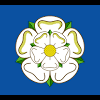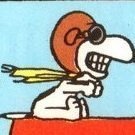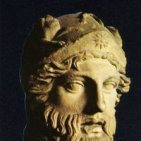Search the Community
Showing results for tags 'WW1'.
-
Hi All finally got this finished, looking at some early and mid 1918 photos I used those to judge the weathering etc, base and a figure or two to do. Cheers For Looking Mark
- 18 replies
-
- 40
-

-

-
Two similar but different kits to be done in the markings of two brothers, one of which is extremely famous. Read through to find out who they are, Two Revell Fokker Dr.1 kits One is the very old Revell kit dating from 1966. This boxing being from 1978 The second kit is a more recent one, from 2003. Now this is where it all gets messy or confusing. I'm going to sort-of cross-kit these. The older kit has the decals of Manfred von Richthofen's 425/17 of April 21st 1918 but the decals are in a very poor state The newer kit has Manfred von Richthofen's 425/17 of March 1918 plus ones for Lothar von Richthofen's 454/17 of March 1918 I intend using the decals for Lothar on the older kit and making up the necessary Balkenkreuz for Manfred's Dr.1 from spares or painting over some Cross Pattee markings I may draw on some spare decals in my files, including from this sheet The older Dr.1 kit cost me £7.94 and the newer one £8, both off ebay from different sellers and those prices included postage For some odd reason the prices of 1/72 Fokker Dr.1 kits are going Uber on ebay. I can, and might pick up, a very old but new issue kit of a 1/48 Fokker Dr.1 in my LMS for £8 I hope to get on to these very soon. I only have one 1/72 Fokker F.1 and five 1/72 Fokker Dr.1s built and as yet I don't have 425/17 of April 1918 done. Its about time I corrected that omission
- 64 replies
-
- 13
-

-
- Fokker Dr.1
- Richthofen
-
(and 1 more)
Tagged with:
-
Hello everyone… I’ve had a varied model-making year, covering weekend Airfix aircraft builds, a handful of 1/35 and 1/72 armour types, a bit of diorama and figure sculpting work and so on. The projects that I’ve enjoyed the most are the scratchbuilds though – the satisfaction of developing and improving new techniques has been the thing that’s really driven me more than anything. My current Miniart M3 Lee is a marvellous kit and I’ve been loving the detail, but I really feel the need to “scratch that itch” so I’m embarking on another armour scratchbuild. I hope to keep the M3 going at the same time, so my tardy progress on that shouldn’t be too badly affected. This time it’s the Pierce Arrow AA truck. This should be quite similar to the Wolseley armoured car I did a while back… …(in fact, later models of this AA truck were apparently based on the Wolseley truck as opposed to Pierce Arrow) but there are some different challenges this time. Firstly, this vehicle has spoked wheels as opposed to the covered ones of the armoured car, so there’s a fresh skill to tackle straight away. There’s also a fair bit more information that I’ve been able to find on-line. This is a double-edged sword of course; no two photos or drawings are the same, and there’s less excuse to omit interior detail. The fact that it’s partially open-topped comes into play for this as well of course. I (rather hurriedly, in my excitement) ordered some fresh plasticard and tube from ebay. Once it arrived I realised I’d bought 0.5mm glossy white card rather than the nice matt 0.75mm I’ve just discovered I’d used for my last two scratchbuilds, so I had to get another batch of the correct stuff. Here’s the basic ingredients (no the most thrilling of WIP photos I'm afraid): This vehicle isn’t covered by the Landships II card model collection, so I needed to draw up my own plans. Finding a pretty good 4-view colour drawing was a promising start, so this was loaded into CAD and scaled to match the wheelbase dimension I found on Wikipedia. From this, I traced over each panel and then stretched each as necessary to get face-on template views. The truck is pretty basic in construction with no funky angles, so this was easy enough to do. The template parts were then printed onto A4 paper and are now awaiting a can of spray mount before I start drilling for rivets and cutting them all out. This is what I’m aiming for – it looks pretty cool in this picture methinks… Massive gun, which I’m really looking forward to making. Here we go….!
-
I bought a resin kit of Hedi. It seemed Ok compared to pictures. It is clearly based on parts from Emhar's A7V kit wich suits me well. I had seen that there were a couple of things that needed to be fixed. The doors should actually be flush with the hull sides and I could have let it pass but the hinges are placed incorrectly on one side of the body. I was impressed by the handles at the doors though. However, I discovered that the "turrets" in the corners are too low and I felt that it was too much work to trying to fix that. It was time to bring out some plastic card. Coming this far, everything felt wrong. Things do not fit together. Only one thing to do. Tear it apart. New sides are made. I didn't want to make new fronts so I had to splice in plastic instead. Now new roofs must be made. The "guillotine" is a great help in cutting multiple parts for the grilles in the roof. But things still don't fit so everything is torn apart and new fronts has to be made anyway. Now nothing will remain of that first attempt of the build. Time to tear apart the the other end and rebuild it.
- 26 replies
-
- 16
-

-
Heroes and Villains. Here’s my 1/12 scratchbuilt WW1 trench scene; “Heroes and Villains”. I decided to have a crack at sculpting figures using Fimo polymer clay. It was a real learning experience and great fun. They’re far from perfect, but being my first attempt at this sort of thing, I’m really pleased with how they’ve come out. When I started, I didn’t think I’d be able to get anywhere near as good as they’ve ended up. Sculpting is really intense and challenging, but with a bit of practice, not as difficult as I thought it would be. Next time I’ll hopefully improve my figures’ heads (necks are a particular challenge for me) and the painting – I’m no figure painter! I wanted to show a dynamic scene that raises questions about our interpretation of who is a hero and who is a villain in war. WIP is here…. Thanks for looking!
- 6 replies
-
- 20
-

-

-
- WW1
- Scratchbuild
-
(and 1 more)
Tagged with:
-
It's 1916 and the German front lines have recently replaced their pickelhaubes with the new M16 steel helmets. Here we have a German officer leading a raid across no man's land in the hopes of bring back a couple prisoners to see what's all the mechanical noise they are recently hearing. Figures are modified Verlinden WW1 German figures by adding gas masks and the M16 helmets 1/16 scale. This was a longtime build which I probably started 10 years ago and just recently created the base and got it off the bench.
- 7 replies
-
- 21
-

-

-
- ww1
- no mans land
-
(and 1 more)
Tagged with:
-
Hi Everyone, Started my latest project, been looking forward to this, Meng MkV, Started it Two weeks ago, and following a different format, building more parts into sub assemblies and painting more parts on mass once assembled instead of all individual, seems to be working reasonably well. have only come across some minor fit issues, all with the side sponsons, I should be able to work it out after reading loads of tips in various posts, shame so much of the kit is hidden, just wish I had the skill to open up access panels to do it justice. Very impressed with the detail on the Ricardo engine, shame you will not see most of it. The rest of the engine cradle and drivetrain/clutch is rather nice too. Did no clean up at all on the rollers for the tracks, cut from sprue as close as I could and that’s it, they are totally hidden, added the PE plates on one side, but not on other, You cannot see them is one reason and also I may run some cables through here for the lights I am going to add to the interior, The guns look ace, currently researching correct/best colours for them, added the ally barrels from Aber Engine primed in Stynlrez Black primer, I think it has come out so well there is no point adding Black paint to it, just a little chipping and colour in places. Interior done yesterday, Stynlrez white primer, good enough as I think, then I decided even a new tank not long arrived in theatre probably would not still be white, so added Hataka interior Buff, definitely has right colour for tobacco and other staining, will be adding a bit more suitable grime as well. Got to tidy up engine cradle, should have at least painted that separately in retrospect, probably won’t see it I inside though. Got the idea of the cream colour from a good friend who did the work on the MkV at the IWM in London, then came across the Hataka Buff colour. So there is the progress so far, Cheers Mark
- 34 replies
-
- 14
-

-
I am in the process of building my first (well, for about 46 years, so, same thing really) model aircraft and I have a couple of questions about spraying suitable acrylic paint. I have built some model railway wagons and have sprayed using Vallejo model air with some success, using a badger velocity airbrush. I had a look at the colour requirements for the model (Eduard Fokker Dr.1 1/48 weekend edition) and first of all the colour references seem to be for Gunze or Mission models. I set about looking up equivalent colours in Vallejo model air. To my dismay I find that none of the colours I have in stock are the ones I need to use now, so I went to a local shop to buy some and they only had Humbrol enamels or Vallejo model colours, so I came home empty handed. I will obviously need to buy all the paints on the list so that got me wondering if it would be better to buy the paints as listed on the instructions sheet, but I wanted to get some input first. I know we all have our favourite brands, but I have been happy with Vallejo model air thus far, it sprays nicely, it doesn't really smell, and is reasonably cheap. But, I am aware that others may know better so, is it a case of "stick with what you know", or, "No, there are far better makes of paint out there which would suit far better" Another question, is it better to brush paint metallics? Thanks Tony
-
First a warning – you’ll have to bear with me before I get any actual build pictures up for this – it may run for a while as I’m attempting something I’ve never tried before and lockdown is limiting what I can actually do at the moment. I’ve also prepared quite a lot of this and done a few experiments already off-line, so to speak, so there’ll be a bunch of posts in quick succession to start off with. I’ve returned to model making a few times over the years since my first forays into the hobby as a kid. Each time I re-trace my childhood steps, starting with 1/72 Airfix fighter planes, moving up to 1/48 and then diverting into AFVs and figures. Each time, I push the boundaries a bit more in an attempt to learn new skills and discover new techniques. This time round, I’ve reached the figures stage and I recall as a kid, making use of Tamiya’s 1/12 racing driver kit as the basis for a couple of Napoleonic Hussar/Dragoon types. This seemed a good plan at the time – the racing driver was pretty cheap and modestly attired (separate helmet was a bonus) allowing various bits of lead foil, filler and scraps of plastic to be slapped on him to turn him into a variety of soldier types albeit sporting fetching 70’s Jackie Stewart hairdo’s. Now I’ve discovered a 21st century alternative. Bandai make an artist’s posable 1/12 mannequin called “body Kun” which is anatomically correct (well, there are a couple of bits missing, if you see what I mean) and in terms of movement, he can be posed in pretty much any position a real person would. My first thought was to use one of these, fuse his joints with superglue and simply dress him up, but at £20 a pop, it seems a bit pricey for each figure, especially as it’s something of an experiment and could all end up in the bin. I’ve ordered one anyway, to use (as the manufacturer intended) as a guide to my model-making/sculpting. In carrying out my research into all this, I also discovered that there’s quite a healthy world/market out there for 1/12 action dolls – I think GI Joe may have kicked it all off, being a little smaller than Action man. As a result, beautifully sculpted resin heads are available on the web for about £15, although they tend to be spiderman/Wolverine/Brad Pitt and so on; remarkably realistic and so instantly identifiable, but a good starting point. I’m keen to try sculpting, but a bit scared of tackling faces. Clothing is another area I’m more than a bit wary of – basically I’ve no sculpting experience at all, so I need all the help I can get. A diorama is building up in my mind’s eye…. WW1 British soldier has stormed a German trench, wildly brandishing his fearsome trench club, swinging at all and sundry in a berserk frenzy with his trenchcoat billowing around him. His foe is broken; a shellshocked German sits holding his head in his hands, resigned to his fate, photos of his sweetheart fluttering out of his bloodied hands and into the mud. The aim of all this carnage (for me) is to practice and hopefully achieve a realistic full-on action piece. My Tamiya racing squad were all stuck in the same rather louche pose and I want to see how far away from that I can get. So here’s the plan: · Dress (me) up in something approaching WW1 British uniform, at least in shape. Pair of old corduroy’s, walking gaiters for puttees, long sports jacket and trenchcoat. · Use 4 friends (may have to wait until lockdown has eased of course) to video front, back and both sides of me as I “swing into action” on their phones whilst one of them counts out load. I’ll also have a “measuring stick” on view so I can scale the resulting images accurately later. · Load these videos into basic editing software and align them (that’s where the counting comes in). · Capture a suitably dramatic/animated moment from each video to get front, sides and back views. I’ll print these slightly larger than 1/12 on paper, with the contrast pushed up to highlight clothing folds. · Pose the body-Kun doll in the correct position using the printouts behind (hence printed a bit larger). · Copy the pose using wire to form an armature. · Bulk out the body with (standard) miilliput to match the body-kun. · Create clothes using scaled sewing patterns I found on the web for WW1 British uniforms out of…. I’m not sure yet; some papery material TBC. Perhaps fag papers for thin cotton and J-cloth for thick wool. Maybe I’ll use superfine milliput or metal foil instead – not sure yet. · Apply the clothes piece by piece, supergluing spot points and sculpting (with PVA if I use “cloth”) to match the profile photos. · Stick on head and hands (body-Kun comes with a variety of hands, so I may try casting some resin copies). · Add 1/12 3D printed Lee Enfield I’ve seen for sale online. · Scratchbuild various apparel and stick on. · Paint. The same will go for the German, and then it just remains to build a trench diorama to place them in. Should be fun!
-
Two figures from Model Cellar.
-
A suggestion. Well in advance as this ere forum works that way and it takes time to get the required numbers A 'Fokker' GB in 2022 I noticed that Antony Fokker started his first company on 22nd February 1912 So 2022 will 110 years of Fokker There are plenty of models, from the E.I / II / III / IV series, the ubiquitous Dr.1, D. VII and the D.XXI to the F.27 100 and more, and all sorts of numbers and types in between. Excluded are the types that Fokker bought in and sold on as a sales agent Anyone for it? 1. Black Knight (me, of course) 2. Corsairfoxfouruncle 3. Marklo 4. Andwil 5. John Masters 6. TonyOD (?) 7. Ted 8. JOCKNEY 9. Tim R-T-C 10. stevehed 11. Arniec 12. Rob S 13. Torbjorn 14. Peter Lloyd 15. RC Boater Bill 16. 2996 Victor 17. zebra 18. ColonelKrypton 19. dnl42 20. Blitz23 21. GREG DESTEC 22. ??
-
Something to keep me occupied during the winter break Tamiya 1/35 Mark IV Male tank, take two by Jon Gwinnett, on Flickr Tamiya 1/35 Mark IV Male tank, take two by Jon Gwinnett, on Flickr Tamiya 1/35 Mark IV Male tank, take two by Jon Gwinnett, on Flickr
- 334 replies
-
- 12
-

-
Eduard Profipack Fokker DVII (Alb) finished as the machine of Ltn d R Carl Degelow of Jasta 40s, Lomme, August 1918. Thanks for looking. AW
-
It appears that Roden are to release the B type bus as the pigeon loft version kit no. 737. Markings for B2125 (1918) & B2132 (1916). Link to images...... https://shop.1-72depot.com/miniatures/1-72/vehicles-1-72/roden/roden-737-type-b-bus-pigeon-loft/
-
Hello all, I am planning a project depicting Indian soldiers in the trenches of France in the First World War. However, the problem is that I haven't really been able to find anywhere that sells these figures and ships to India. Help please
-
B-Type Military Omnibus of the 91 Army Service Corps MTC. Ypres Spring 1915 Introduced in 1910, when most buses were still horse-drawn, the London General Omnibus Company (LGOC) B-type was London’s most successful mass-produced motor-bus. After the outbreak of war in 1914, London buses, along with their drivers and mechanics, were commandeered for the war effort. The buses were used to transport troops to and from the Front Line and were put to use as ambulances and even mobile pigeon lofts. Nearly 1,200 LGOC vehicles went on war service, most to France and Belgium, with some travelling as far afield as Egypt. Apparently a number of these buses went to France still in their LGOC red livery and after a few weeks they were painted in a more suitable colour by their crews. It seems likely that this was a khaki-green although contemporary witness accounts describe a wide variety of colours. It was also observed that quite often the khaki paint would be chipped and worn through and the old red colour would show through bringing back memories of when these buses had travelled London's busy streets in happier days. The windows would often get broken by the soldiers rifles and equipment so in the end they just removed the glass and placed wooden boards on the outside. I guess it also afforded the passengers little protection from stray shellfire. The detail and fit on Miniart's kit is excellent however many of the parts are very fragile making them difficult to remove from the sprues and clean up which led to a very slow build process. I did have to replace some of the linkages with brass rod. The wood grain in the plastic window boards provided in the kit were a little over done for my liking and in most of the photos I could find they seemed to use five boards rather than the six on the plastic items so I used some wood veneer strips to replicate them. I also wanted to have a couple of broken windows so I used some glass microscope cover slips to replace the plastic windows. I did actually paint the model in the LGOC red livery so that I could chip and rub through the khaki top coat to show some ware and tare. However by the time I added all of the mud and dust effects not much of that can be seen so in hindsight I would have saved a lot of time just adding some chipping etc on top of the khaki. The 'correct' Khaki or service colour from WW1 is often debated and I don't think there really is an exact colour so I went with what I think looks right. In this case for a base colour I used AK's Real Colors Khaki Green No3 with some gloss added to get a satin sheen. I cut some stencils from the scanned decal sheet and sprayed the markings on and then sanded them down to give a worn look. Weathering was then added using oils,paints and pigments. There are photos of a couple of these busses carrying a bicycle on the front platform. I thought this might make an interesting addition so I added one of the Masterbox kits. Overall I'm pretty pleased with the way this one has turned out. Hopefully Miniart will add a Pigeon Loft at some point or even a Mobile workshop. If you are interested in how this model went together there is a work in progress here. Wayne
-
Hi all, Here is my latest completion, the 1/72 scale Albatros D.Va from Airfix. This kit’s moulds date from 1957, making the mould around 63 years old! (that's 24 years older than I am...). This is the boxing from the early 2000s, picked up for $4 at a swap and sell. With this build, I wanted to re-kindle that child like feeling of building something for fun, with minimal modifications, and not a care for accuracy. To correct the ancient Airfix kit's flaws would be to scratch build an entire model. So, in the spirit of fun, I wanted to keep this one largely out of the box. Well, I say out of box, but I couldn't help myself. I made a couple of changes, but these were very basic, limited only to things I just couldn't live with. I added a rudimentary cockpit, replaced the engine and guns (both from Roden), heavily modified the spinner and replaced the spindly kit propeller, sanded and refined the flying surfaces, refined the detail on the wheels, sanded down the raised fuselage panels and re-scribed them (though I did keep the characteristic louvers and rivets on the nose – these are a prominent feature of the old mould, even if not entirely accurate). The model was painted with acrylics, with oil paints used for the ‘wood’ fuselage. The model was painted to represent the markings of a machine from Jasta 4, late 1917. Rigging is from elastic. I also had a little bit of a play with the display base, with a rough attempt to set the model on one of the old early 80’s release boxes (from the era where Palitoy owned Airfix… Palitoy released a number of Airfix kits with box art of the built model on a blueprint, for those that remember – of note, Airfix never re-boxed the Albatros in one of these boxings, so this makes it a little more quirky and unique as a base). As a final bit of fun, I also created a ‘box top’ for what may have been, had Airfix released this one during the Palitoy era in the early / mid 1980s: 😊 It was a fun little build, and definitely took me back to the earlier days of my modelling, with a slightly ‘modern’ twist. Feedback, comments and criticisms all welcomed. Cheers, BC
- 55 replies
-
- 96
-

-

-
- WW1
- Albatros DV
-
(and 1 more)
Tagged with:
-
Hello everyone! My Wolseley armoured car.... ....is finally finished! I got tired of waiting for the headlights to dry, and ripped out the microscale Krystal clear (after about 7 coats it was like pork-pie jelly) to replace it with Gorilla clear glue - much better! ...a bit too clear if anything. The saga will continue at the WIP with horses, figures and a diorama base (inlcuding AA box), but for now the car is complete. thanks for watching!
- 11 replies
-
- 29
-

-

-
- Scratchbuild
- WW1
-
(and 1 more)
Tagged with:
-

Bristol Scout 1/32 first scratch build attempt
RichieW posted a topic in Work in Progress - Aircraft
After seeing this little beauty at Old Warden aerodrome and wanting to have a crack at scratch building something I decided it was time to dip my toe in the water. _V5A6869 by Richard Williams, on Flickr The first hurdle was making the cowling, I don't have a rotary tool so making cylindrical shapes is somewhat challenging. Luckily the top of an Encona Hot Pepper Sauce bottle is pretty much the perfect size. Bristol Scout 1264 Cowling by Richard Williams, on Flickr A bit of thinning with a milling head in a pin vice and removing the raised grips and it's there. I found a cheap resin Le Rhone engine on evil bay, a little surgery was needed to get it to fit but very little will be visible. 20200704_225156 by Richard Williams, on Flickr The frame took many efforts before it was usable, the tail feathers even more so. I think they're still a tad too thick so another attempt may happen. Scout framework. by Richard Williams, on Flickr Unfortunately I broke my thumb playing cricket last week so progress has stopped until I can handle tools again but I'm healing fast for an old bloke so hopefully I can whittle a prop, add some turtle deck formers and start detailing the interior next week. I am a total scratch building newbie so any advice would be very welcome. Thanks for reading. Richie- 219 replies
-
- 29
-

-
- Scratch buil
- WW1
-
(and 1 more)
Tagged with:
-
I bought this kit in November 2018 at Telford the first year that Wingnuts attended. TheY brought with them a selection of kits some of which were damaged and this is one of them. It was about half the retail price at the time. It was marked WD on the box and on closer inspection it did have a crack in one fuselage side but not much else. This is the cracked fuselage side with a lot of stress bends. Here are the contents of the box with the box with the three A4 sheets of lozenge decals. This will be a pleasure to do and am looking forward to it and so will take my time. Let’s face it I am not going to be doing another one of these now.
-
Here I post this British 18pdr, built and painted by my father. I found the camouflage and made the pictures . Not many first world war kits in 1/35, so when we saw this in a model kit exhibition at just 5 € we snatched it. Sad that the crew is just 3, five would have been more like it. Placed upon an improvised diorama. The kit is very simple, but looks quite good all the same. If all were so simple, we would have a few thousands more in house!
-
This is my first attempt at a Work in Progress so please bear with me on this one. After my last couple of tank builds became somewhat bothersome at the track stage I thought it was time to build something without tracks. I was going to build Miniart's B-Type lorry but I found the bus too tempting with plenty of scope for different weathering such as broken glass windows and worn down to the wood paint work etc. I think I will need to work on my figure painting skills as this is crying out for some war weary soldiers to be added in a small diorama. I will need to do some research on the subject though as it's not something I've really taken an interest in before. I have 'borrowed' some history notes from The London Transport Museums friends page. https://www.ltmuseumfriends.co.uk/projects/friends/project/24/battle+bus Introduced in 1910, when most buses were still horse-drawn, the London General Omnibus Company (LGOC) B-type was London’s most successful mass-produced motorbus, able to cope with operating conditions in the chaotic and overcrowded city. Building on lessons learned from earlier motor vehicles, the B-type quickly earned a reputation for mechanical reliability, helping to establish the motorbus as a practical vehicle for daily urban service in London. After the outbreak of war in 1914, London buses, along with their drivers and mechanics, were commandeered for the war effort. The buses were fitted with protective wooden boarding and painted khaki for camouflage. The buses transported troops to and from the Front Line and were put to use as ambulances and even mobile pigeon lofts. Nearly 1,200 LGOC vehicles went on war service, most to France and Belgium, with some travelling as far afield as Egypt. I wont do much in the way of sprue shots etc as all of this can be seen on MiniArts web page. https://miniart-models.com/products/39001-b-type-military-omnibus/ The box is certainly packed with parts though. All of the parts come tightly packed in one plastic bag and one of the rear fenders has snapped as a consequence, considering how delicate some of the parts are I was surprised that there wasn't more damage. I have to say that the quality and detail of the mouldings is exceptional and apart from one sprue that obviously has a mould issue there appears to be no flash, ejection pin marks or difficult sprue gates which will be a welcome change from Takom's Mk.10 Chieftain that I have just parked in the painting queue. I'm a little unsure of moulded wood effects, I often find them a little over done however I think MiniArt's representation would probably not look too bad once painted. I shall look more at that when I get there. Some of the parts look as though they could cause a little bit of stress in trying to remove them without breaking them, fortunately I have a brand new set of sprue cutters on their way to me. I'm really looking forward to getting started on this one. I'm not expecting it to be a particularly quick build but hopefully once I have started it will be one of those kits that I just can't put down. Wayne
-
The Aviatik 30.40 was a prototype Austro-Hungarian interceptor from 1918 and this is my build of the Alliance Models 1/48th limited run kit. I have always thought this to be an attractive little aircraft especially with it's interesting two tone grey low-vis camouflage. There only being a few parts in the kit I was hoping for a straight forward build, but as is often the way with limited run kits there was a lot more work than there appeared to be at first glance. I added as much detail to the cockpit as I could based on photos from similar Aviatik aircraft from the period and as usual little of it can be seen now. Seat belts are from Eduard and a couple of generic dials were added to the instument panel. All the flying surfaces were sanded to remove the exaggerated rib detail and to thin the trailing edges. The distinctive washout on the ailerons was added by gently heating them and bending into shape. The engine was replaced by one I found in the spares box. With some additional wiring and plumbing although not 100% accurate it's passable, especially as it's mostly hidden behind the cowling. The struts supplied were rather thick and over sized so these were replaced with brass Strutz material, soldered where strength was required. The spoked wheels are Eduard items robbed from another kit and I drilled out the kit wheels to get the tyres. Not perfect but good enough. The propeller is made from wood veneers. After looking at the photos I realised it wasn't fixed which is why it looks a little crooked in some views. The paint was my own mix of Mr.Color paints. The hardest part of the build was trying to replicate the machined aluminium cowling and panels and I'm still not really happy with the way they turned out. As always critique and advice welcomed. Wayne.
-
Morane-Saulnier type 'N' Bullet. 1/32 Special Hobby The Morane Saulnier Type N first flew in May 1914, well before the outbreak of the Great war and was designed as a racer rather than a combat aircraft. Although a fairly modern looking machine, it lacked ailerons and used wing warping instead. The tailplane was all moving and only the rudder was hinged on the fin. It was fitted with a Hotchkiss machine gun which was not synchronized to fire through the spinning propeller, rather it used two large steel wedges to deflect the bullets off it. Thus equipped, a small number of them entered service in 1915 and although not popular to fly, they did help end the 'Fokker Scourge' of the German Eindekkers. The RFC bought a small number and also used them to effect. The kit is from Special Hobby, and even at 1/32 scale is quite small. I really like Special Hobby kits, they are very well moulded and fit together very well. This one comes with a resin engine, propeller, ammo belts and minor accessories. Also included is a nice etched brass sheet with engine details, seatbelts and turnbuckles for the brave to use! But the inexplicable thing is that nowhere in the kit are the large & prominent 'MS' circular logos that go on the cowling. Nada, Nothing, Zilch, not even anything on the decal sheet. This is a serious omission and I'm baffled why Special Hobby didn't provide them on the etch sheet. All is nit lost though, as Tom's Modelworks in the USA do a neat photo etched pair that you simply must get if building this kit. I have no connection with Tom's Modelworks, but must praise them for excellent service. I ordered the etched logos in the UK on a Saturday, and they arrived from the US the following Thursday. Amazing and much appreciated. The kit Instructions (and the Eduard 1/48 kit) show this particular aircraft as having red painted cow;ing/spinner areas on the fuselage. Reading the Windsock datafile, this seems very unlikely. All Morane-Saulnier aircraft of this period were finished with black enameled metalwork, and this is how they were supplied to the French Air Force and Royal Fling Corps. It was the RFC that initially repainted the black areas in red, to distinguish their machines from the Pfalz and Fokker Eindekkers. Later deliveries to the RC were painted red at the factory, but I am convinced that French machines remained with the black finish, so that is how I have done my model. The wing ribs were covered with thin bamboo strips of a lighter colour, I used Wingnut Wings German 'linen' rib tape decal strips. I spotted the Blackdog 'Escadrille Lafayette pilot' on the big H website and though he might go rather well with this and my SPAD V.II (when I get around to building it !). There were no painting instructions so I had to google a lot of it. Anyway, I hope you like it, it was a very enjoyable build. Thanks for looking, John
- 10 replies
-
- 29
-

-
- WW1
- Morane Saulnier
-
(and 1 more)
Tagged with:

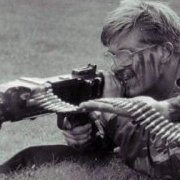
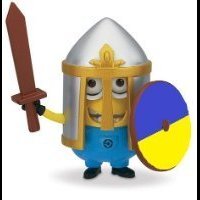
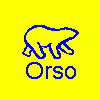
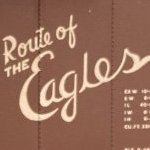

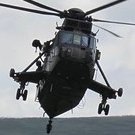
Wedge-TailedEaglePortraitRaptorDomains.thumb.jpg.41a306d3445a68f0f2df773e01776ea6.jpg)
